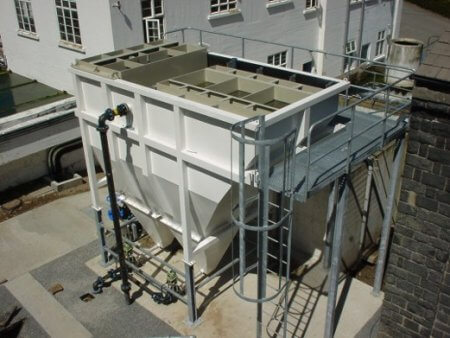Wash water treatment
Water treatment works produce waste water. Sand filter backwash water is the largest wastewater stream generated, with flows
varying between 1-10% of total drinking water production.
Coagulation, flocculation and tilted plate separation is an effective way to reduce wash water volumes:
100 m3 of wash water may be split into 97 m3 of settled water and 3 m3 of sludge. The thickener then reduces the sludge volume to 0,7 m3.
The typical inlet total suspended solids (TSS) concentrations are 200–300 mg/l, with outlet concentrations of around 5 mg/l and < 1mg/l AI/Fe.
The sludge is typically released at 1% dissolved solids (DS).
Tilted plate separators, using integrated coagulation and flocculation, showed to be reliable for backwash water treatment.
Backwash water treatment may initially be focused upon discharging waste water with low solids loadings. However wash water reuse in the primary treatment process may be an economical next step. This is carried out successfully using post filtration and disinfection.

